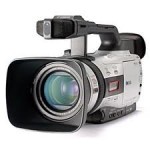“Journalism without photographs is like writing without verbs.”
Because photography used to take a great deal of training and expertise, “visual storytelling used to be reserved for serious technicians only.”
Digital photography + ubiquity of cell phone cameras, has made everyone a photographer
“Doing it well takes patience, practice and preparation.”
“You need to know the basics… composition, how to operate the camera, how to work with a subject so you can make them feel comfortable”
Digital cameras are convenient because you can:
- Take as many pictures as you want
- See immediately whether you captured the image you wanted
- Upload pictures to the Web and share them
- Save money: don’t have to purchase film and don’t pay to print photos you don’t want
- Easily edit pictures on a computer
Pixel (PICTure ELement) — the visual representation of data in a digital image or graphic
Cameras store photographs as digital files on a memory card. The more pixels in a photograph, the more bytes needed to store the picture.
Resolution — a measurement of pixels that are available to the human eye; refers to the number of pixels in an image
Photographs on Web sites need a resolution of only 72 ppi (pixels per inch); will look blurry in a newspaper, especially if enlarged
Ownership, copyright and fair use:
- Do not “borrow” others’ photographs without permission
- Creative Commons project: an effort to legally protect those who wish to share their work as long as they are given credit
Digital camera basics:
- Two kinds of digital cameras: beginners should use automatic settings
1. Point-and-shoot, or all-in-one: more compact, easier to use; more
affordable; lens + flash built in; most equipped with a video mode
2. DSLR camera: captures better photos because image sensor 10x larger;
more complex to use; usually costs 2 to 3 times more; accessories
(lenses, flash) cost extra; video mode not as good
- Basic camera functions:
1. Camera modes: choose shutter speed icon from the dial on top
of the camera that represents the moment you’re trying to capture
2. Zoom: digital and optical; use only the optical provided by the
lens (doesn’t affect image quality)
3. Flash: lightning bolt icon on back of the camera; auto flash means
camera will determine whether flash will be used; you can turn off
the flash or “force” the flash (helpful when bright backlighting
leaves shadows on a subject’s face); avoid red eyes in photos
— use red-eye reduction mode, try changing angles or have
subject look slightly to the side of the lens
4. View/delete: view photographs on your camera as you shoot
and delete ones you know won’t work
Shooting better photos with a digital camera:
- Good composition cuts away unimportant, distracting elements
- Best photos are shot with natural light only
- Cloudy and partly sunny days are best for outdoor photography
- Shooting mug shots/ head shots:
1. Avoid harsh sunlight and strong backlight
2. Try to photograph when skies are overcast
3. Use flash as a last resort — adds shiny spots to faces
4. Pick a background that’s neutral, simple and dark
5. Position the subject away from any walls
6. Make sure nothing is “growing” out of the person’s
head (lamp, etc.)
7. Biggest mistakes beginners make — they don’t get
close enough to their subjects or to the action, and they
don’t take enough photographs
8. Shoot a variety of wide, medium and tight shots —
makes editing easier + increases odds of having a good image
Working with digital photographs:
- Real power of digital photography: editing on a computer
- Altering photos by adding or removing objects is strictly forbidden in documentary journalism
- Make sure photo reflects the scene accurately
- View images from a storytelling point of view
- Manage and organize photos from your camera to your computer by changing generic file names from digital camera to something you’ll recognize on your computer (combination of date and subject); use underscores, not spaces, to separate words in file names
Steps to prepare an image for online publishing:
- Edit a copy of the photo — never the original
- Crop the photo to omit unnecessary information
- Resize the picture
- Modify the resolution to 72 ppi
- Tone and color correct the picture
- Save a Web version
- Keep it simple
How to build a good slide show:
- Limit to two to three minutes in length
- Use the right amount of photos
- Match the photos to the audio
- Use captions
- Avoid awkward transitions — use fade in or out
- Avoid overpowering music
- Should have all the elements of a good story:
1. Attention-grabbing opening
2. Logical progression that builds to a climax
3. A finish that provides a sense of summary
Briggs recommends Photoshop Elements to build a photo gallery and Soundslides to create slide shows with audio.
Don’t forget, “a picture is worth a thousand words.” A photograph has impact. It provides color and interest. It makes the story come alive for the reader and later serves as a memory prompt for all of the emotions associated with it.

 Entries (RSS)
Entries (RSS)
Leave a Reply